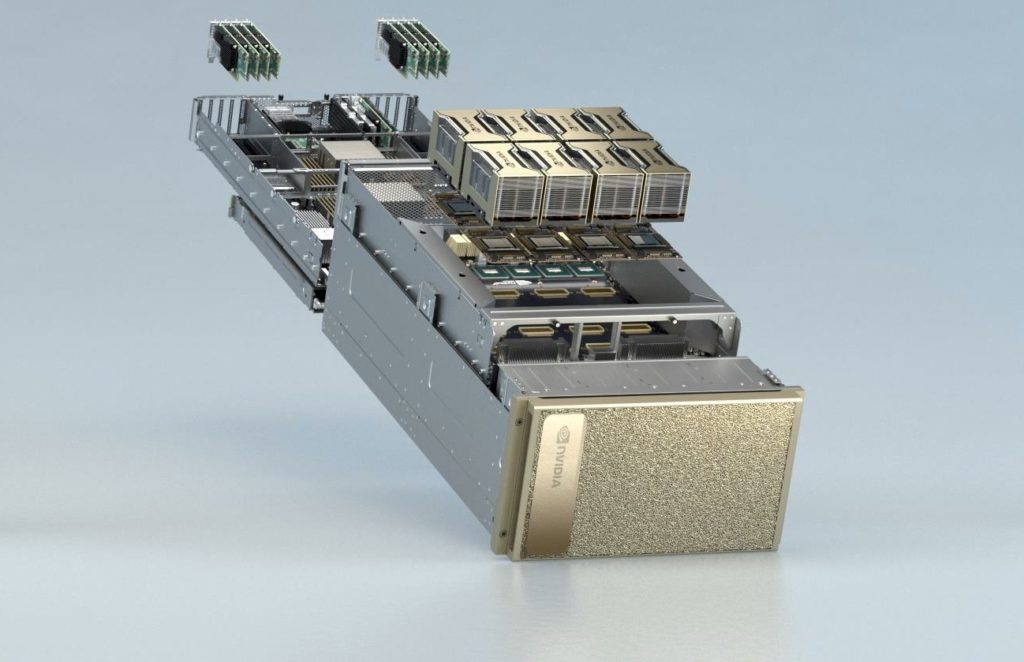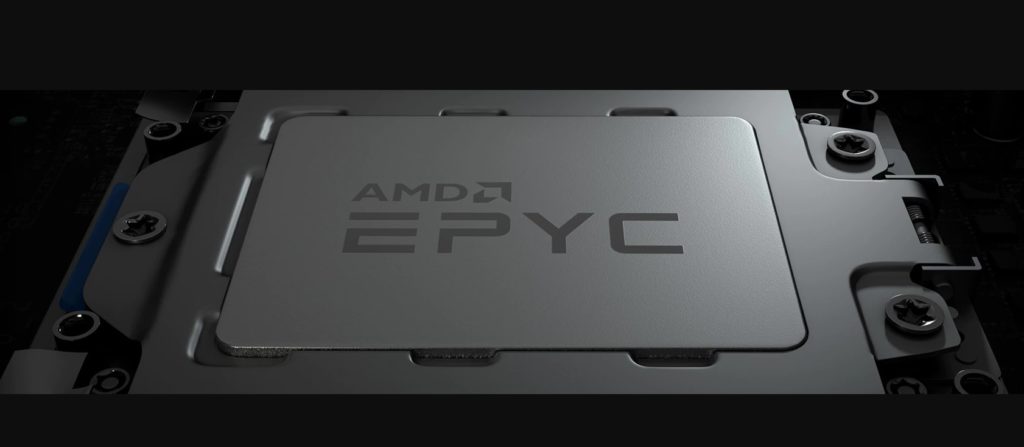One of the highlights of last night’s Nvidia GTC 2020 was the inclusion of AMD’s EPYC CPUs in their ‘DGX A100’ HPC device. The DGX A100 is the successor to their Volta Based DGX V100 claiming up to 20X performance increase.

The DGX A100 will feature dual AMD’s 2nd Gen EPYC 7742 processors. This equates to 128 cores running at 2.25GHz (base) and 3.4GHz (boost).

It is also important to note that AMD’s EPYC CPUs are the only x86-based server processors to support PCIe 4.0 right now. This translates to 128 lanes of I/O per processor for high-performance computing and connections with Storage and GPUs.
AMD Going Super

The latest generation of AMD’s EPYC processors coupled with their AMD Radeon Instinct GPU’s also powers two of the world’s fastest exascale supercomputers, the Frontier and El Capitan. This is in addition to a handful of other supercomputers as follows.

- ATOS BULLSEQUANA XH200 SUPERCOMPUTERS: France order two of these supercomputers for their meteorological purposes. They will multiply their computing power by 5x. Each of them is capable of processing 10 million billion operations per second.
- CRAY ARCHER2: UK Research and Innovation’s (UKIR) employs ARCHER2 supercomputer. The 2nd Gen AMD EPYC powered ARCHER2 gives 11x higher performance than its predecessor the ARCHER.
- ETH ZURICH EULER VI: The German University ETH Zurich is using 2nd Gen AMD EPYC 7742 CPUs in its Euler VI system.
- DELL EXPANSE: The San Diego Supercomputer Centre(SDSC) has called on Dell for its next-generation supercomputer. The Dell Expanse is expected to deploy in mid-2020 powered by Dell EMC PowerEdge servers with 2nd Gen AMD EPYC processors. It is expected to deliver 5 petaflops of peak performance.
- JOLIOT-CURIE: GENCI and Atos announced the first operational supercomputer worldwide to include 2nd Gen AMD EPYC 7H12 series processors.
- BIG RED 200: Indiana University acquired the fastest university-owned supercomputer in the nation. It is used for advanced research in artificial intelligence, machine learning, data analytics, and medical research. This is the successor to the highly successful Big Red II Cray supercomputers.
- HLRS ‘HAWK‘: Hawk is an HPE Apollo 9000 System and is among the fastest supercomputers worldwide and the fastest general-purpose system for scientific and industrial computing in Europe. It is also supported by 2nd Gen AMD EPYC processors.
- NEC SX-AURORA TSUBASA: NEC was selected by the German weather forecasting service, Deutscher Wetterdienst (DWD), to build the system valued at 50 million Euro. Based on 2nd Gen AMD EPYC processors.
- CRAY VULCAN: United Kingdom’s Atomic Weapons Establishment (AWE) selected Cray and Hewlett Packard Enterprise (HPE) to support security and defense of the U.K. with the Cray Shasta supercomputer.
- CRAY HPC11: The Air Force Life Cycle Management Center, in partnership with Oak Ridge National Laboratory, tapped Cray to supply a Cray Shasta supercomputing system with a contract valued at $25 million. The HPC11 supercomputer will enable higher fidelity weather forecasts for U.S. Air Force and Army operations worldwide. It will be one of the first supercomputing systems with 2nd Gen AMD EPYC processors for use in operational weather forecasting.
Conclusion
It is always exciting to see the Red and Blue teams working together like these APUs. However, it’s even more so to see Red and Green team working together. As is the case with the DGX A100.
But it’s been a pleasant surprise to see AMD claw it’s way to HPC dominance. In other words, this will allow AMD’s bull run to keep going. Especially as Intel’s woes haven’t seemed to come to an end in both the consumer and HPC space.


